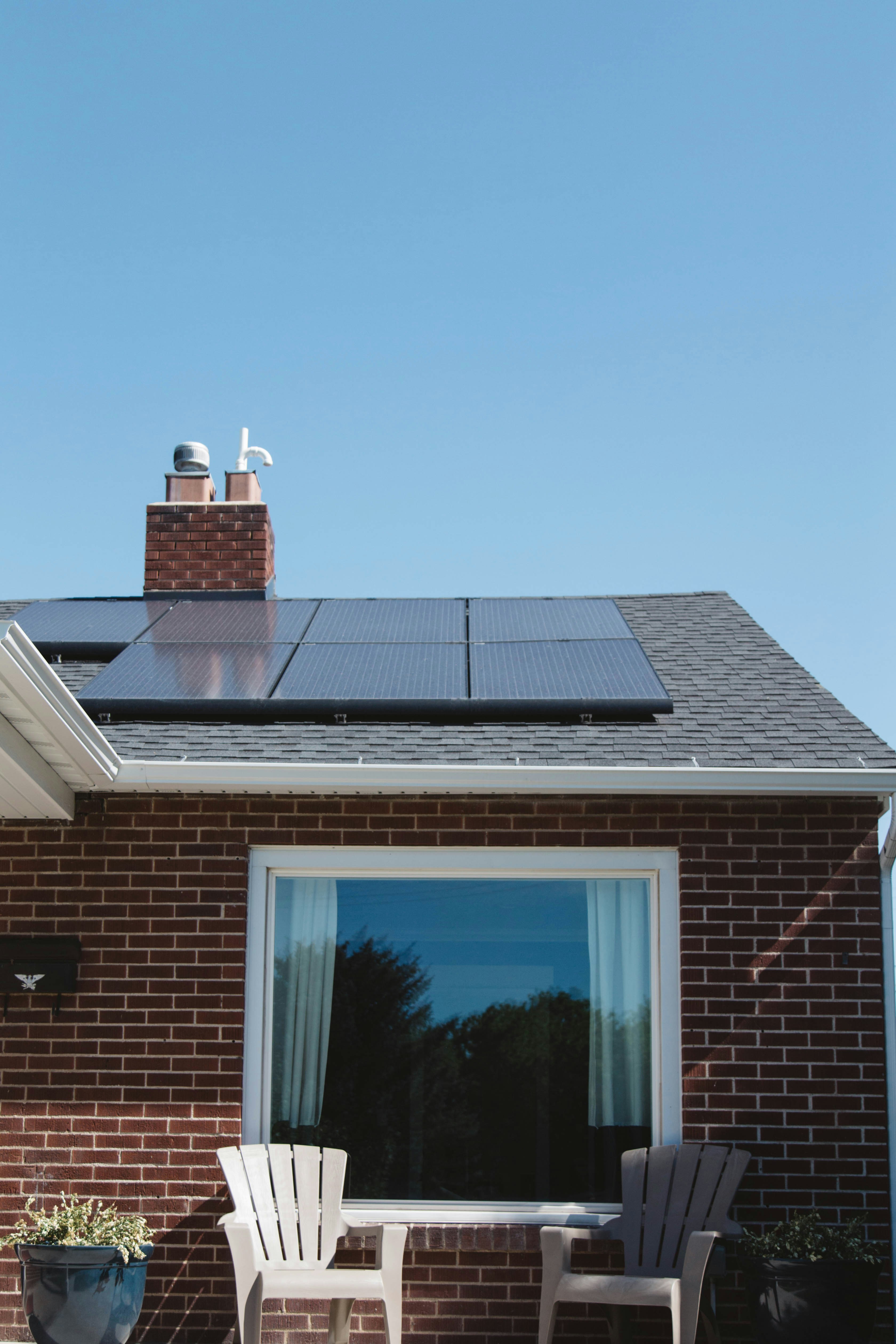
Discover Unique Features of Eco-Friendly Homes
Eco-friendly homes are more than just a trend; they represent a vital shift in how buildings can be designed and constructed. Many people mistakenly believe that going green means sacrificing comfort or style. However, innovations like heat recovery ventilation and occupancy sensors prove otherwise. This blog post will cover the unique characteristics of eco-friendly building designs, highlight innovative architectural features, and explore the long-term benefits these homes provide. Readers will learn how embracing eco-friendly concepts can address concerns about fossil fuel reliance while enhancing their living experience.
Key Takeaways
Eco-friendly homes focus on renewable energy, sustainable materials, and energy-efficient technologies.
Incorporating natural ventilation and daylight maximizes comfort and reduces energy consumption.
Water conservation techniques like rainwater harvesting are essential for sustainable home design.
Community initiatives highlight the importance of sustainable practices in building and landscaping.
Long-term benefits of eco-friendly buildings include reduced operational costs and improved property value.
Unique Characteristics of Eco-Friendly Building Designs

Eco-friendly building designs focus on several unique characteristics that enhance sustainability. Architects integrate renewable energy solutions like solar panels, use sustainable materials for construction, and implement energy-efficient technologies. In addition, they create inviting indoor environments and design for water conservation and management through effective irrigation systems. These features highlight the importance of sustainable architecture in modern construction.
Integrating Renewable Energy Solutions
Integrating renewable energy solutions is a cornerstone of eco-friendly building designs. Homes often feature a well-planned façade fitted with solar panels that capture sunlight, reducing reliance on fossil fuels and minimizing greenhouse gas emissions. This commitment to energy conservation not only decreases toxic substance exposure but also aligns with the principles of the Living Building Challenge, which encourages sustainable practices in residential construction.
Utilizing Sustainable Materials for Construction
Utilizing sustainable materials for construction is a key aspect of eco-friendly building designs. In sustainable development, materials like reclaimed brick not only provide durability but also reduce waste by repurposing older structures. By focusing on the building envelope, architects can ensure that their designs minimize environmental impact while promoting energy efficiency and reducing resource consumption.
Implementing Energy-Efficient Technologies
Implementing energy-efficient technologies is essential for creating eco-friendly homes. These technologies, such as innovative wood insulation products and advanced photovoltaics, help reduce energy consumption and lower utility bills. Additionally, incorporating recycling programs within the home can significantly enhance sustainability, allowing homeowners to utilize resources more responsibly while adhering to environmentally friendly house plans.
Use of innovative wood insulation for better energy retention.
Installation of photovoltaics to harness solar power effectively.
Incorporation of recycling programs to manage waste and resources.
Creating Inviting Indoor Environments
Creating inviting indoor environments is vital in eco-friendly homes, as it directly influences occupants' productivity and well-being. Architects, such as those from the Bjarke Ingels Group, emphasize using thermal mass to regulate indoor temperatures, making spaces more comfortable without excess energy use. Furthermore, incorporating water treatment systems and ensuring natural light flow can significantly enhance the living experience by fostering a healthy atmosphere for all organisms living within the home.
Focus on thermal mass for better temperature regulation.
Utilize water treatment systems for improved indoor health.
Incorporate natural light to enhance well-being.
Designing for Water Conservation and Management
Designing for water conservation and management plays a vital role in eco-friendly homes, ensuring that sustainability measures are effective. This approach includes using efficient irrigation systems and rainwater harvesting techniques to reduce overall water consumption and lessen carbon footprints. These practices not only support environmental design but also contribute to lowering the need for air conditioning by maintaining cooler indoor temperatures through strategic landscaping and roof choices:
Efficient irrigation systems help minimize water usage.
Rainwater harvesting provides an alternative water source.
Landscaping choices can reduce energy needs for air conditioning.
Green roofs enhance insulation while managing water runoff.
Innovative Architectural Features in Eco-Friendly Designs

Innovative architectural features in eco-friendly designs play a crucial role in addressing climate change and promoting ecology. Techniques such as natural ventilation, green roofs, and vertical gardens improve energy efficiency while maximizing daylighting in living spaces. Additionally, employing passive solar design principles and promoting biodiversity through thoughtful landscaping further enhances these homes' sustainable aspects, making them practical solutions for greener living.
Incorporating Natural Ventilation Techniques
Incorporating natural ventilation techniques in eco-friendly homes enhances comfort while promoting environmental protection. By designing strategically placed windows and vents, homes can create a flow of fresh air that reduces reliance on mechanical cooling systems, leading to greater energy efficiency. This approach not only helps minimize indoor pollution but also creates a healthier living space where occupants can thrive:
Utilization of cross-ventilation for improved air quality.
Designing operable windows for customizable airflow.
Positioning openings to maximize solar power gains.
Enhancing thermal comfort without using excessive energy.
Using Green Roofs and Vertical Gardens
Using green roofs and vertical gardens in ecological house design enhances both aesthetics and functionality. These structures contribute to water efficiency by absorbing rainwater and helping regulate indoor temperatures, reducing the need for air conditioning. By complying with building codes and incorporating sustainable building materials like concrete in their construction, homeowners can create beautiful, environmentally friendly spaces that support both nature and energy conservation.
Maximizing Daylighting in Spaces
Maximizing daylighting in eco-friendly homes is essential for achieving sustainable development goals. By strategically placing windows and skylights, architects can ensure that spaces receive ample natural light, reducing the need for artificial lighting and lowering energy consumption. This practice supports climate resilience and contributes to a platinum certification in green building standards, enhancing both comfort and overall aesthetic appeal.
Employing Passive Solar Design Principles
Employing passive solar design principles is an effective approach to enhancing the sustainability of eco-friendly homes. This method maximizes natural light and heat from the sun, reducing the need for mechanical heating and cooling systems that often rely on refrigerants, which can be harmful to the environment. By carefully considering window placement and insulation, homeowners can maintain comfortable indoor temperatures while minimizing stormwater runoff and reducing reliance on landfills through better resource management.
Long-Term Benefits of Eco-Friendly Buildings

Eco-friendly buildings offer numerous long-term benefits. They enhance property value and marketability by appealing to buyers who value sustainability. Over time, they reduce operational costs, especially in energy and water resources. These homes foster healthier living environments filled with daylight and support local ecosystems and communities. Furthermore, they play a significant role in climate change mitigation, addressing global warming potential effectively.
Enhancing Property Value and Marketability
The value of eco-friendly buildings, like the impressive Shanghai Tower, significantly rises as more buyers seek sustainable living options. Green building practices not only appeal to homeowners but also increase marketability due to higher demand for energy-efficient homes that reduce operating costs. Utilizing environmentally friendly materials such as steel and integrating features that support local ecosystems contribute to long-term property value retention and attract environmentally conscious buyers.
Reducing Operational Costs Over Time
Reducing operational costs over time is a significant advantage of eco-friendly buildings. Sustainable house plans often incorporate energy recovery systems and Energy Star appliances, which help lower monthly utility bills by maximizing energy efficiency. By minimizing their carbon footprint and fostering biodiversity through thoughtful landscaping, homeowners can enjoy long-term savings while supporting the environment.
Fostering Healthier Living Environments
A key benefit of eco-friendly buildings is that they foster healthier living environments. By focusing on efficient energy use and reducing greenhouse gas emissions, these structures promote better air quality and overall well-being. Building standards like BREEAM emphasize the importance of a sustainable built environment, influencing urban planning to create spaces that enhance the quality of life for all residents.
Promotes better air quality.
Supports efficient energy use.
Reduces greenhouse gas emissions.
Influences urban planning positively.
Enhances the quality of life for residents.
Supporting Local Ecosystems and Communities
Supporting local ecosystems and communities is a vital aspect of sustainable home design. By implementing features such as native landscaping and water conservation techniques, eco-friendly homes help reduce environmental degradation and promote biodiversity. These homes exemplify leadership in creating sustainable practices that not only benefit the residents but also enhance the surrounding environment, making a positive impact on the community as a whole.
Conclusion
Eco-friendly homes encapsulate innovative features that promote sustainability and improve the quality of life. Incorporating renewable energy solutions, sustainable materials, and energy-efficient technologies significantly reduces environmental impact while lowering operational costs. These designs create healthier living environments and support local ecosystems, making them increasingly desirable among homebuyers. Understanding these unique characteristics empowers individuals to make informed choices that contribute to a more sustainable future.


